Week 41: Prisoner Ties
Rope has been used to restraint prisoners in various cultures. In Asia this often took the form of rope based technique in martial arts. More specifically in Japan, various martial art schools had subset of their techniques using rope called torinawajutsu or hojōjutsu 捕縄術. These are usually divided in two categories, hayanawa 早縄 (fast rope) and honnawa 本縄 (main rope). Hayanawa is a group of techniques to quickly capture the opponent, these are supposed to be fast to tie and focus on efficiency. Once a prisoner has been captured, honnawa techniques use more secured ties to restrict them for a longer period of time.
The Edo period (1603-1867) is considered the golden age of hojōjutsu. It then faded in popularity until WWII when a few published documents revived the interest in this topic. With the lack of documentation of erotic uses of hojōjutsu, it is considered as an indirect ancestor of Japanese rope bondage. That said, many important rope artists have studied hojōjutsu and included some of their discoveries in their craft and so can you!
The goal of this week is to try different techniques from rope based martial arts like hojōjutsu to discover how we can adapt and integrate them in our bondage practice. Unlike modern bondage, not only are these techniques risky, they actually put the rope in dangerous places on purpose. We have to be mindful of the risks as we explore this topic.
Note – Rope365 is a living project. Subscribe to the mailing list and follow us on Patreon to get notified when the more content gets published.
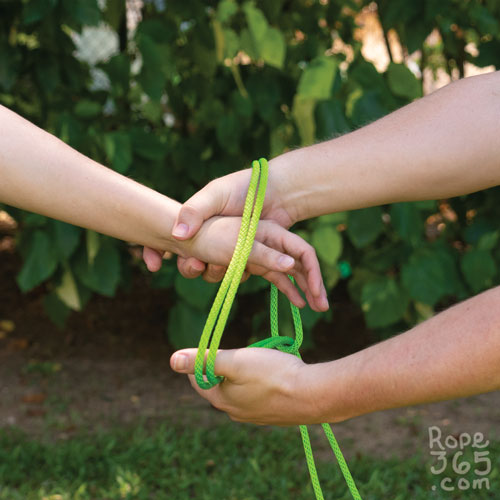
Day 281: Capture – The first step is to capture the opponent. Explore with different ways to efficiently tie the opponent’s upper limbs. Be especially mindful of exposed nerves around the wrists and on the upper arms as you explore this activity.
Inspirations and Resources |
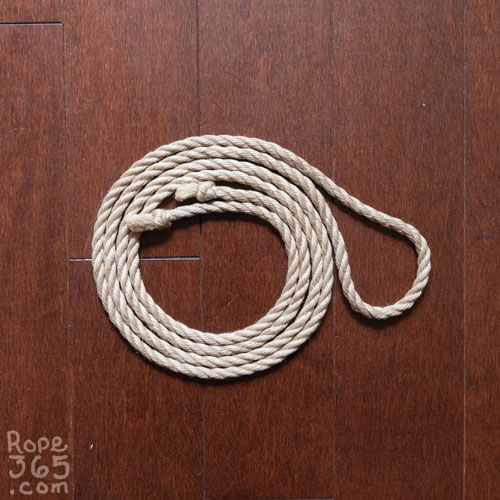
Day 282: Upper Body Control – Most hojōjutsu capture ties are designed to control the wrists, the arms and the neck. Capturing a prisoner doesn’t focus on specific patterns, but is instead ready to improvise as the fight is happening. Most hayanawa ties put the body in a box tie position but there are a few variations like self-choking teppō. Try restricting the body in an improvised way, change starting point and the order of which you capture each limbs. The safety of those ties can be questionable, it was the responsibility of the prisoner to stay calm and avoid incidents. |

Day 283: Full Body Control – Continue the exploration of improvised restriction and add in the lower body. The feet and part of the clothing can be a continuation of an upper body tie. It is common in hayanawa ties to connect the neck with the feet or ankle in order to create a predicament and prevent escaping, this comes with obvious risks of choking. |
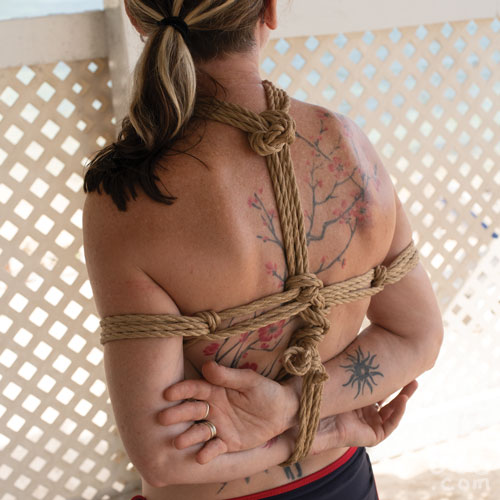
Day 284: Meaningful – Once the prisoner is under control. More secure ties can be assembled in order to be less escapable and hold in place with movement. Some of these ties looked loose but would tighten up if the prisoner tried to escape. Other were escapable on purpose as the real restraint was the power dynamic with the samurais. Different patterns were used depending on who was tied and the crimes for which they were arrested. It was considered very shameful to be tied using secured knots, therefore many patterns used open frictions to preserve the prisoner’s dignity depending on their rank and if they had be judged as guilty. For example, closed fist meant the prionner was still holding on something while open hands meant they had admitted to their crimes. Most honnawa ties bind the arms in the back in a box tie position with a wide diversity of motif on the upper body. The hishi 菱 (diamond), jūmonji 十文字 (cross), and kikko (turtle shell, hexagon) are recurring shapes in these ties. Each school had their own patterns as a signature, hiding most of it’s complexity in the back, making it difficult for opponents to learn to escape. Try to reproduce of the honnawa ties from references and explore in creating ties that are simple yet solid and restrictive. Explore the different sensations of the patterns to find what meaning you have for these ties. Just like with the hayanawa ties, most ties involves tying the neck and targeting exposed nerves, adjust the ties when needed, avoid struggling and keep your cutting tool close. Inspirations and Resources
|
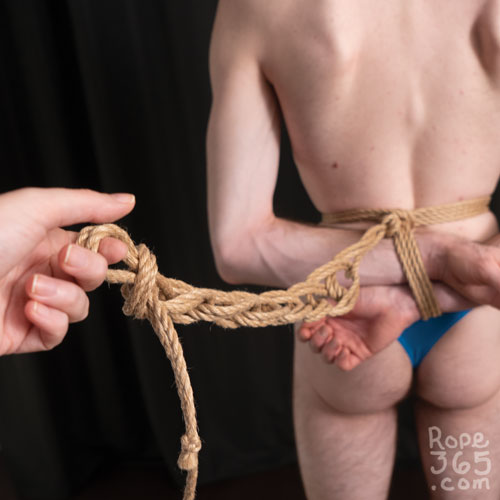
Day 285: Transport – To bring the prisoners to their new destination (usually a prison), most of the honnawa ties finished with a leash. A common technique was to coil that leash in a chain sinnet (Day 207) so that if they tried to escape, they could gain a bit of speed before being stopped, using their strength against them. Somes ties were designed to transport prisoners more easily such as tying the hands to the sides so it would be easier to keep their balance on a boat. Create a tie to transport your partner using a chain leash. Explore how different arm positions affect walking and balance. Inspirations and Resources |
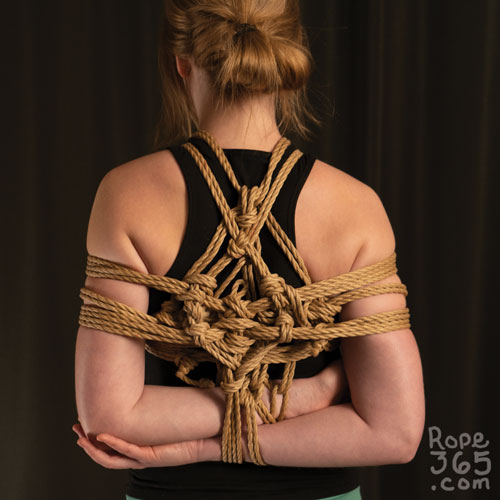
Day 286: Tie Over Tie – Once your opponent is controlled, you can tie a more formal and solid pattern over the quick capture tie. This combines both the hayanawa and the honnawa techniques. Remove the original capture rope once the structure is tied. Try your favorite box tie on someone already tied with a capture rope. How does it feel to remove the capture rope under the existing tie? |
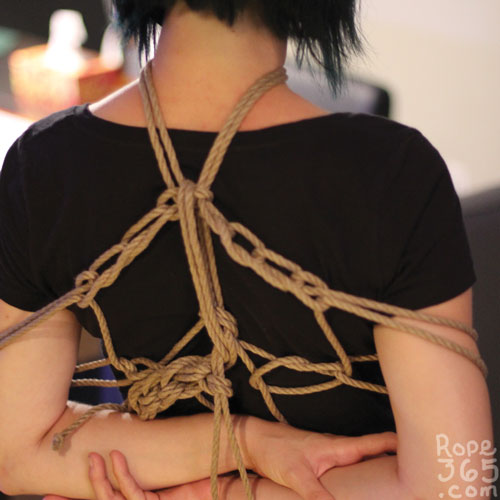
Day 287: Disappearing Ties – The chain sinnet principle can be used to create ties that can be untied by simply pulling on the tail. These were used to get the rope back more easily after an execution or to exchange prisoners without giving away the rope. By walking straight forward with someone holding the rope, the tie can progressively untie itself. Try out different disappearing tie designs and try creating your own. |
Video References
We compiled a Youtube playlist with various videos on this topic, let us know if you find others we should add to this list. Note that video references may display risky or unstable techniques, viewer discernment is advised.
Gallery

Inspirations and Resources
- Check out the Book Page for premium references
- Fujita Seiko – Zukai Torinawajutsu
- Obijutsu by Yoshin Ryu Jutaijutsu Torino
- Torinawa Hoen Ryuu copy of 1893 document by Nuitdetoyko
- Hojojutsu group on fetlife
- Hojojutsu – the Brutal Path to Self-Enlightenment by FuriousBuddha
Or return to Winter for more options.
Credit: Banner, disappear M: Quainty R/P: Ebi McKnotty – Capture M: Pixiegurly R/M: ClosedEyesSeeing P: Ebi McKnotty – Secure, Hidden meaning M: IndigoFey R/P: Ebi McKnotty – Tie over tie M: Miss Soffia R/P: Ebi McKnotty




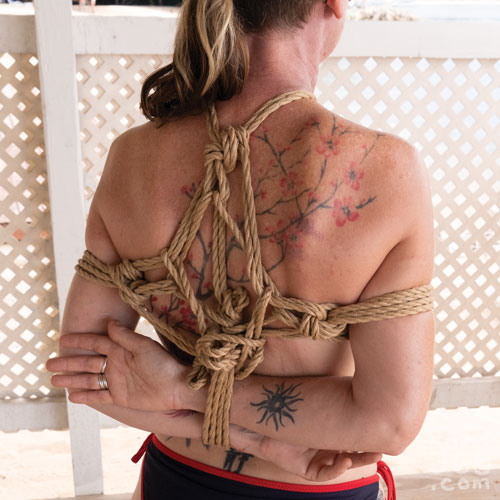


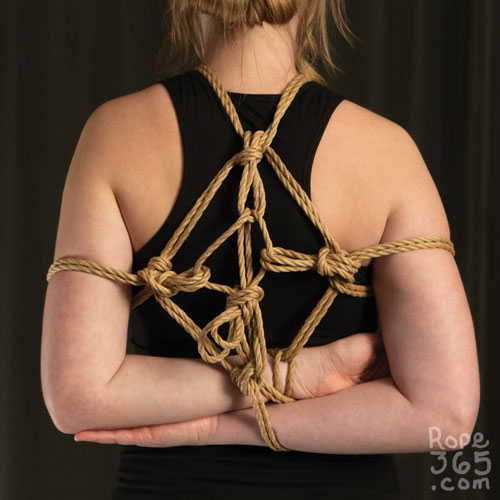

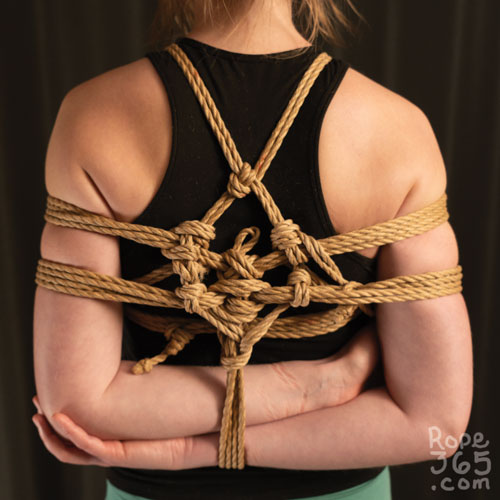

Leave a Reply